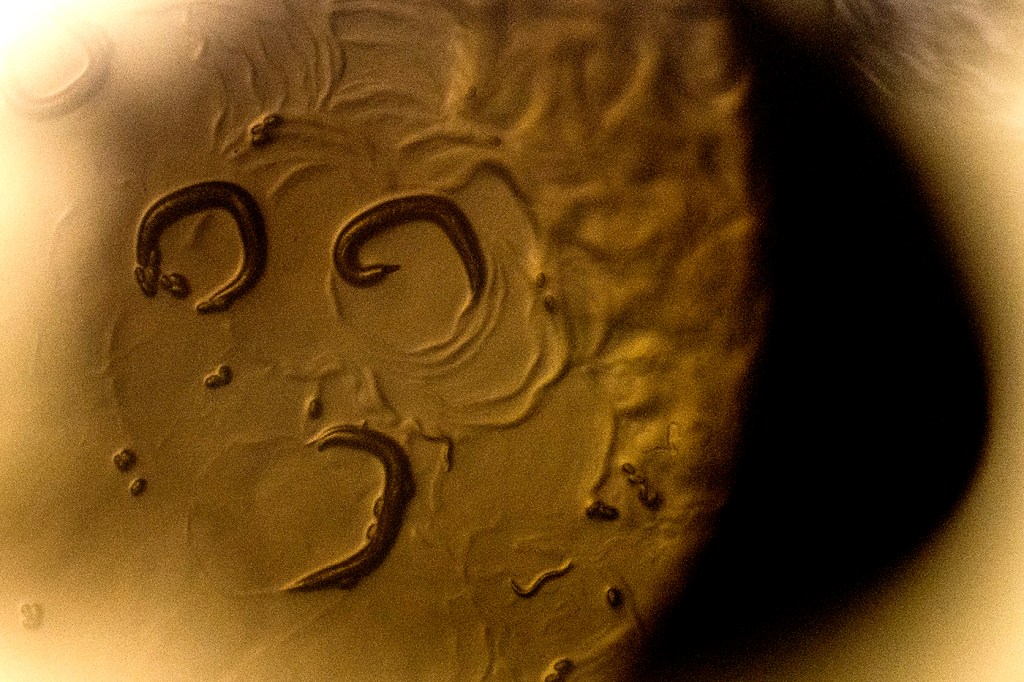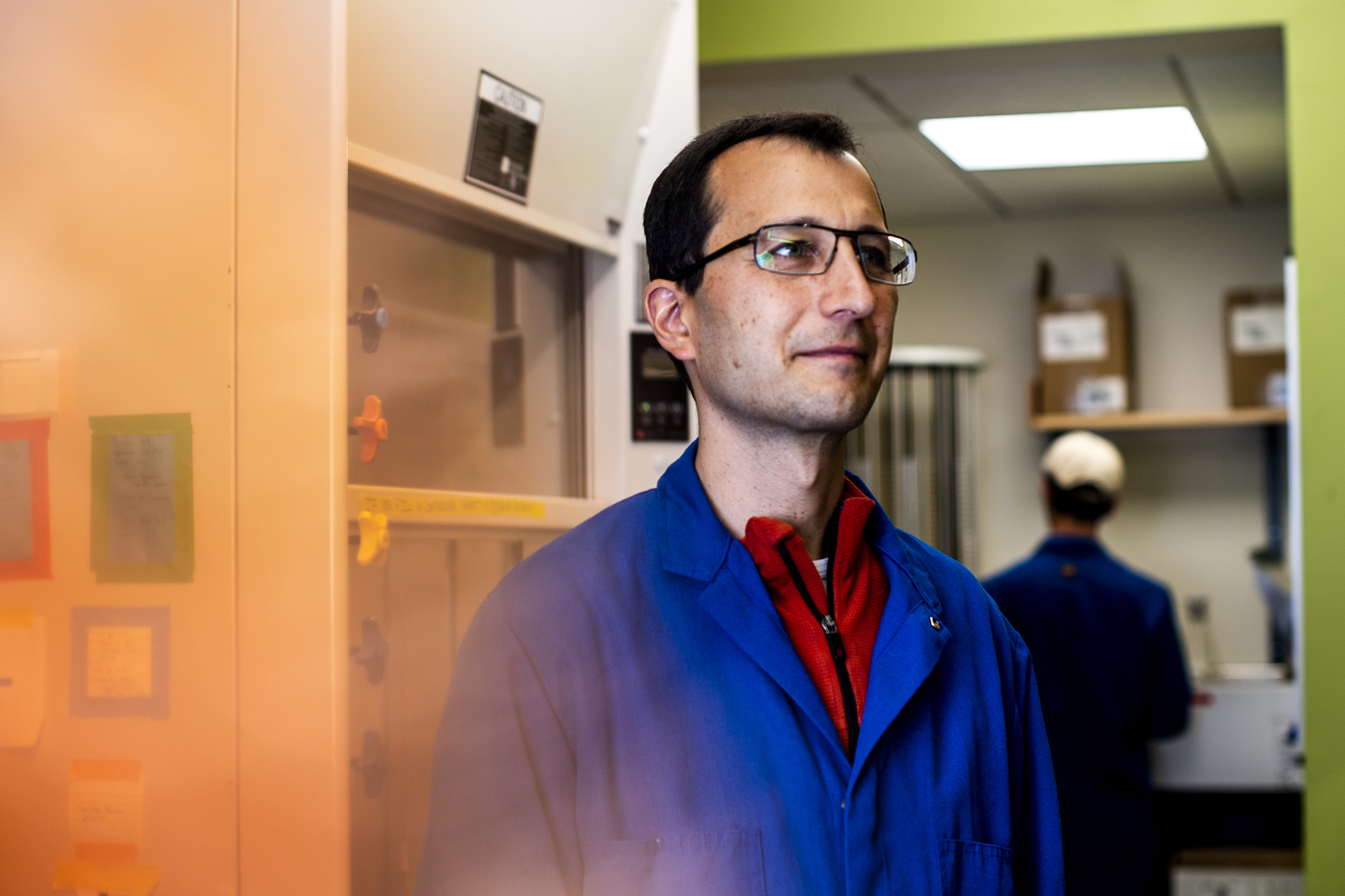How these worms avoid getting poisoned

Javier Apfeld approached the question like a worm detective. Except, instead of solving a wiggly creature’s murder, the biologist was trying to understand why worms didn’t die, despite a deadly toxin’s common presence in the environments in which they live.
The verdict: The worms know how to detect and dodge the chemical threat. A trick they use, as Apfeld and colleagues describe in a new paper published in PLOS Pathogens, is that they know how to get by with a little help from their food.
And, says Apfeld, an assistant professor of biology at Northeastern, understanding the worms’ methods could help us understand how other creatures—including humans—that face that same toxic threat may stymie that chemical foe.

Javier Apfeld, assistant professor of biology at Northeastern University. Photo by Ruby Wallau/Northeastern University
The worm in question is called Caenorhabditis elegans, and it’s a type of microscopic roundworm often used as a model organism to study human diseases. One of the biggest threats to its existence is a common substance: hydrogen peroxide.
Hydrogen peroxide can be fatal for all kinds of organisms to encounter. The chemical compound reacts easily with other molecules, and can break down cell walls. It’s found all over the natural world, particularly in the microscopic spheres as it is produced by a wide array of microorganisms.
Hydrogen peroxide is so common that many organisms have evolved defense mechanisms against its toxicity. One method is to produce enzymes that degrade the chemical toxin and prevent it from doing damage. Worms are no different.
But in a previous study, Apfeld and his team noticed a peculiar thing: C. elegans turn off their hydrogen-peroxide defenses when they eat.
“It seemed kind of weird at first,” he says. “But it turns out that the bacteria the worms eat have similar defenses, these enzymes that degrade peroxide.”
Apfeld surmised that perhaps when worms smell food, they figure that they’ll be able to co-opt that bacteria’s protection for themselves. From the worms’ perspective, it makes sense, he says: “Why induce a protection when you can freeload off the protection from the bacteria?”
But not all bacteria offer the worms the same protection. So could worms actually tell the difference between which snack would protect them and which wouldn’t?
Apfeld put the question to students in his laboratory. Co-led by graduate student Jodie Schiffer and undergraduate student Stephanie Stumbur, they set up several experiments that forced the worms to choose between different foods in a petri dish—sometimes in the presence of hydrogen peroxide.
In one experiment, the researchers gave the worms the choice between bacteria that degrades hydrogen peroxide and bacteria that doesn’t. They’d place a worm in between the two choices in the petri dish and watch where it went.
Not surprisingly, “when there was peroxide around, the worms really had a strong preference for the bacteria that protected them,” Apfeld says. Sometimes the worms would go both places, but once they sensed that the bacteria wasn’t going to protect them, they’d usually leave that food.
But not always, Apfeld says. “It’s a difficult decision” for the worms, he says. “Do you leave the food? Because if you leave the food, you may not encounter food again and die. And if you stay, you may die, too,” if there is hydrogen peroxide around.
To dig deeper into C. elegans’ decision-making, Apfeld collaborated with Vivek Venkatachalam, assistant professor of physics at Northeastern, and his laboratory to image the brain activity associated with these choices. The team identified which neurons responded to the presence of hydrogen peroxide in the environment, and which would respond to food.
The researchers found that given an environment with both food and hydrogen peroxide, only one of the neurological responses would win. If the bacteria offered less protection, the food-seeking neurological mechanism was less likely to win, and the worm would put its energy into escaping the threat of hydrogen peroxide rather than chowing down on the bacteria.
“They are responding to the concentration of food, the concentration of peroxide,” Apfeld says. “But we are only beginning to understand how the worms make decisions and how they respond to conflicting cues.”
Further investigation, he says, is warranted to better understand how the brain coordinates the patchwork of sensory inputs that signal danger, food, and other important indicators for survival. And understanding them in worms might yield clues about how creatures with more complex neurological systems (like humans) know how to react in ways to keep themselves safe.
For media inquiries, please contact Ed Gavaghan at e.gavaghan@northeastern.edu or 617-373-5718 .





